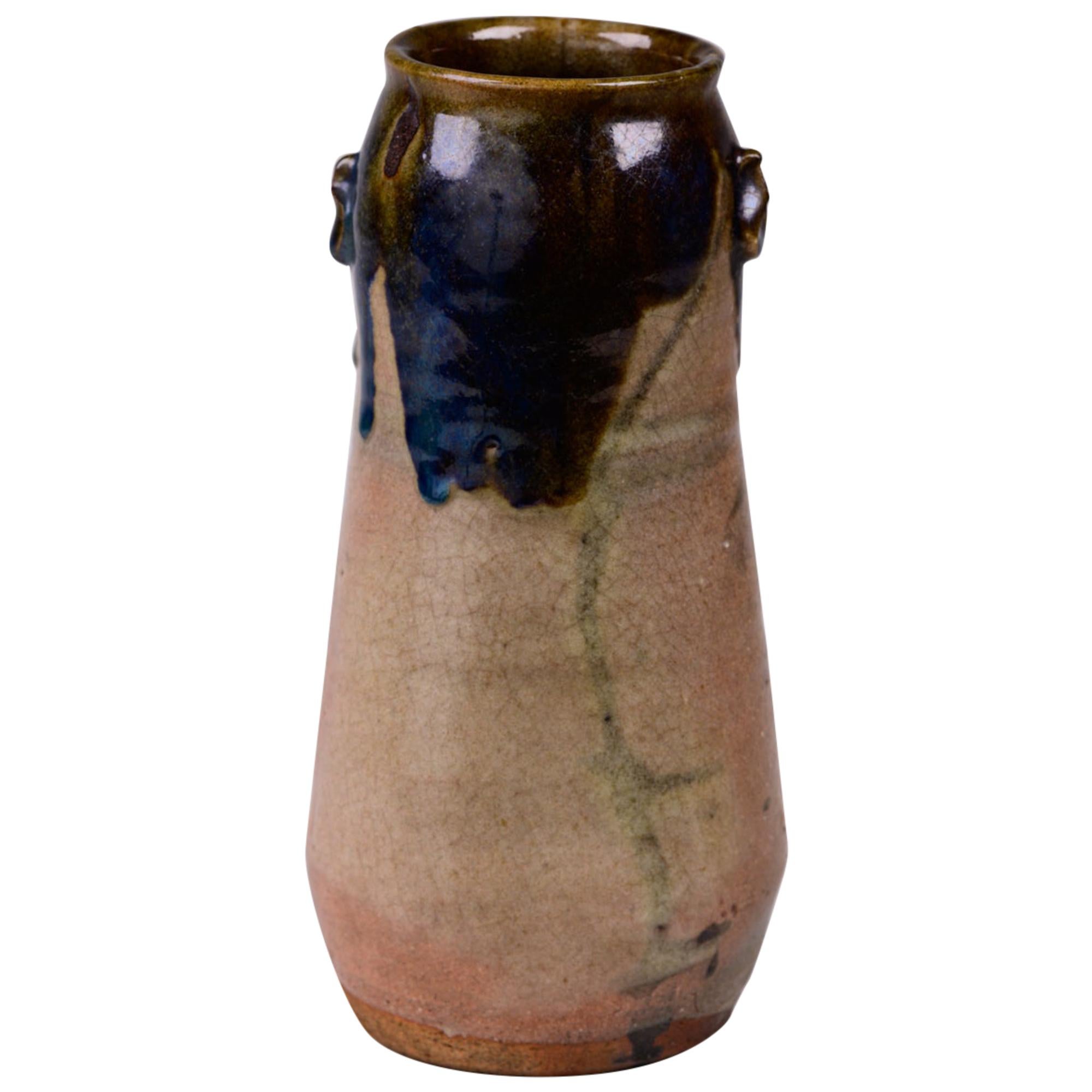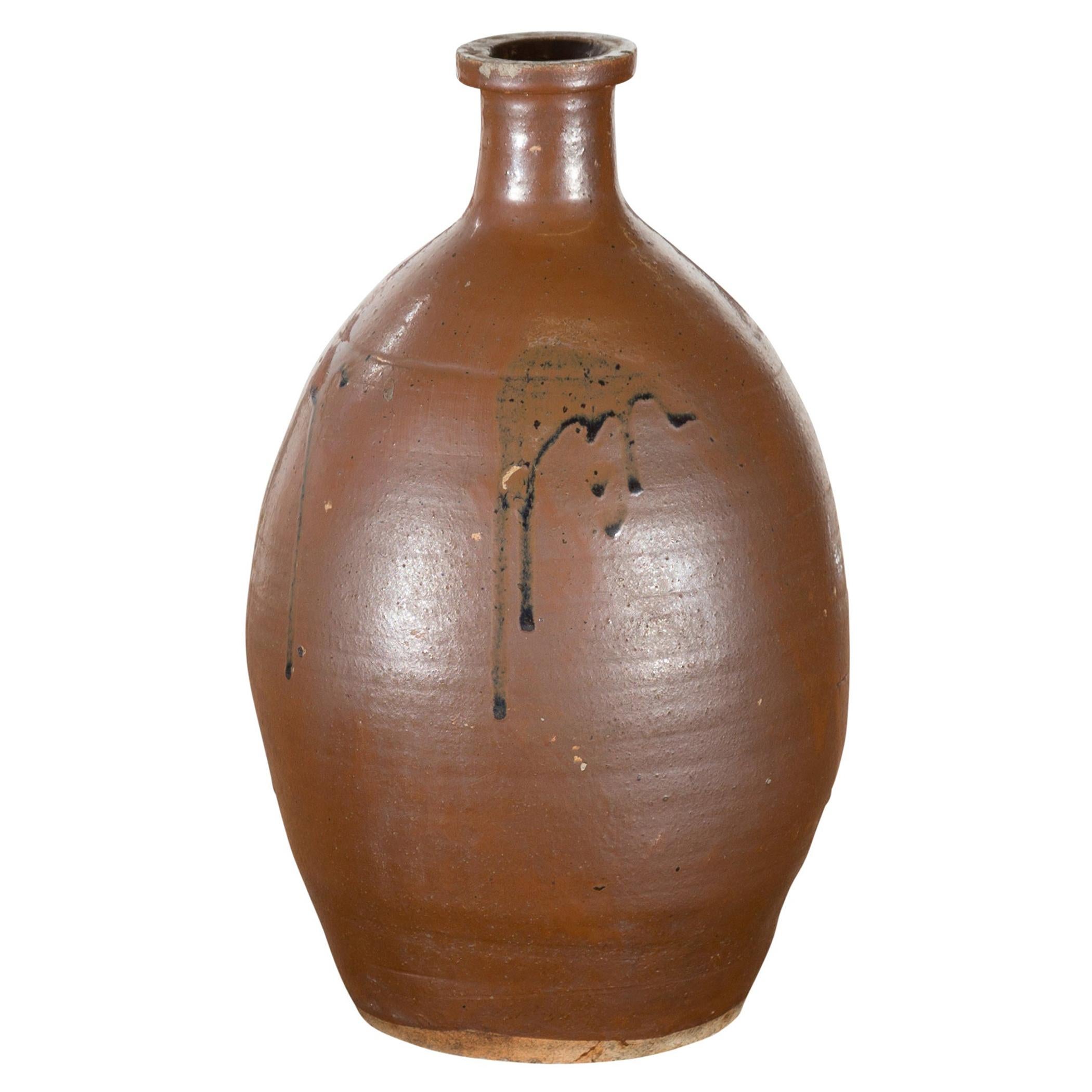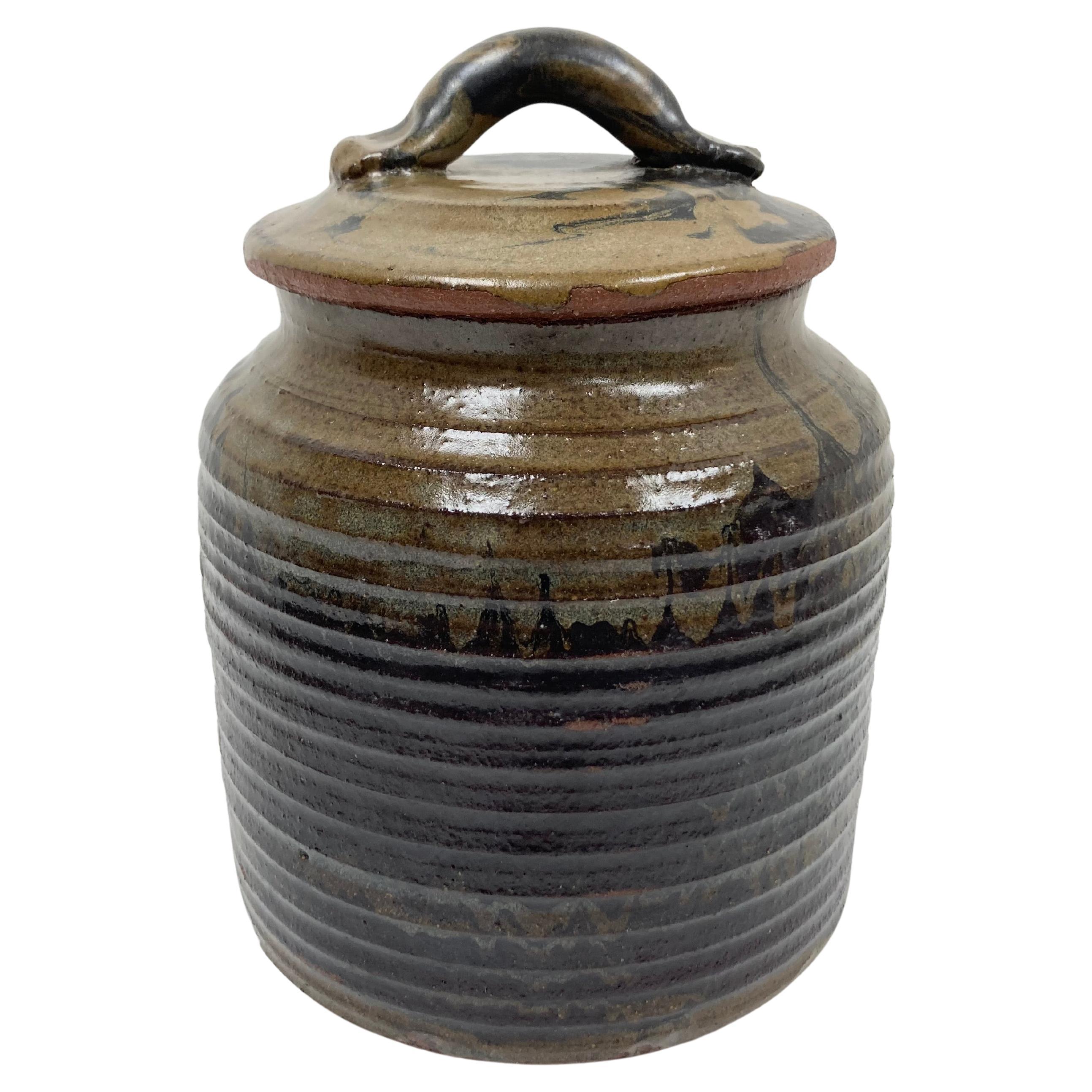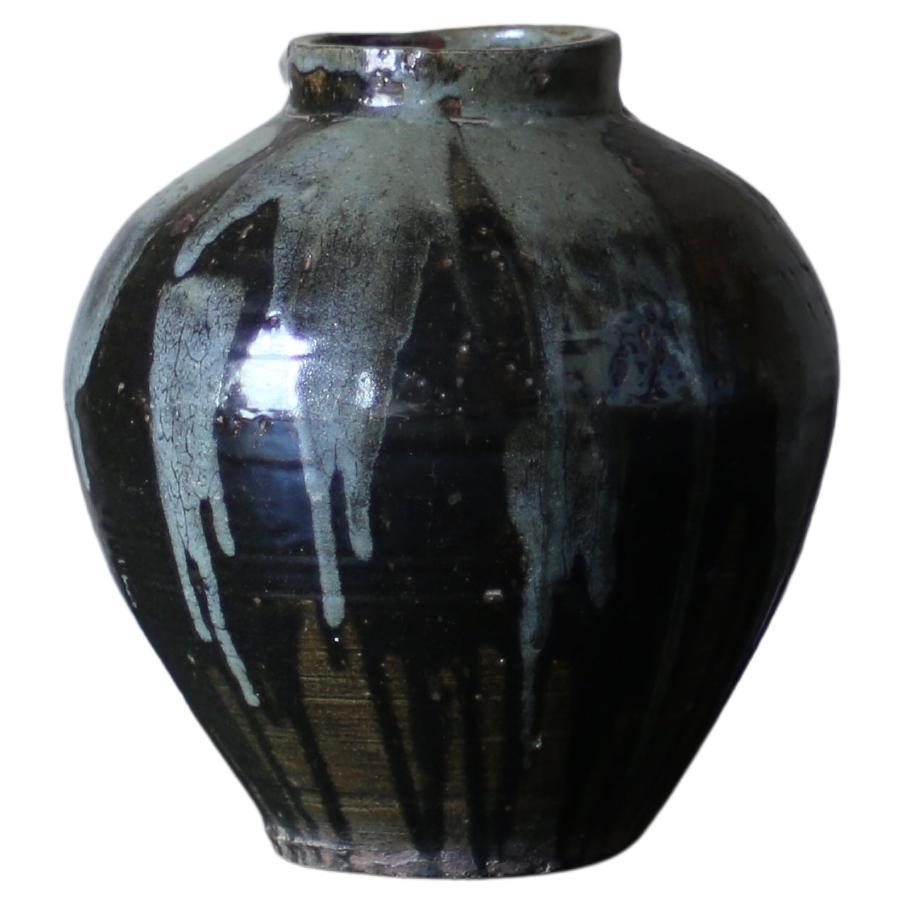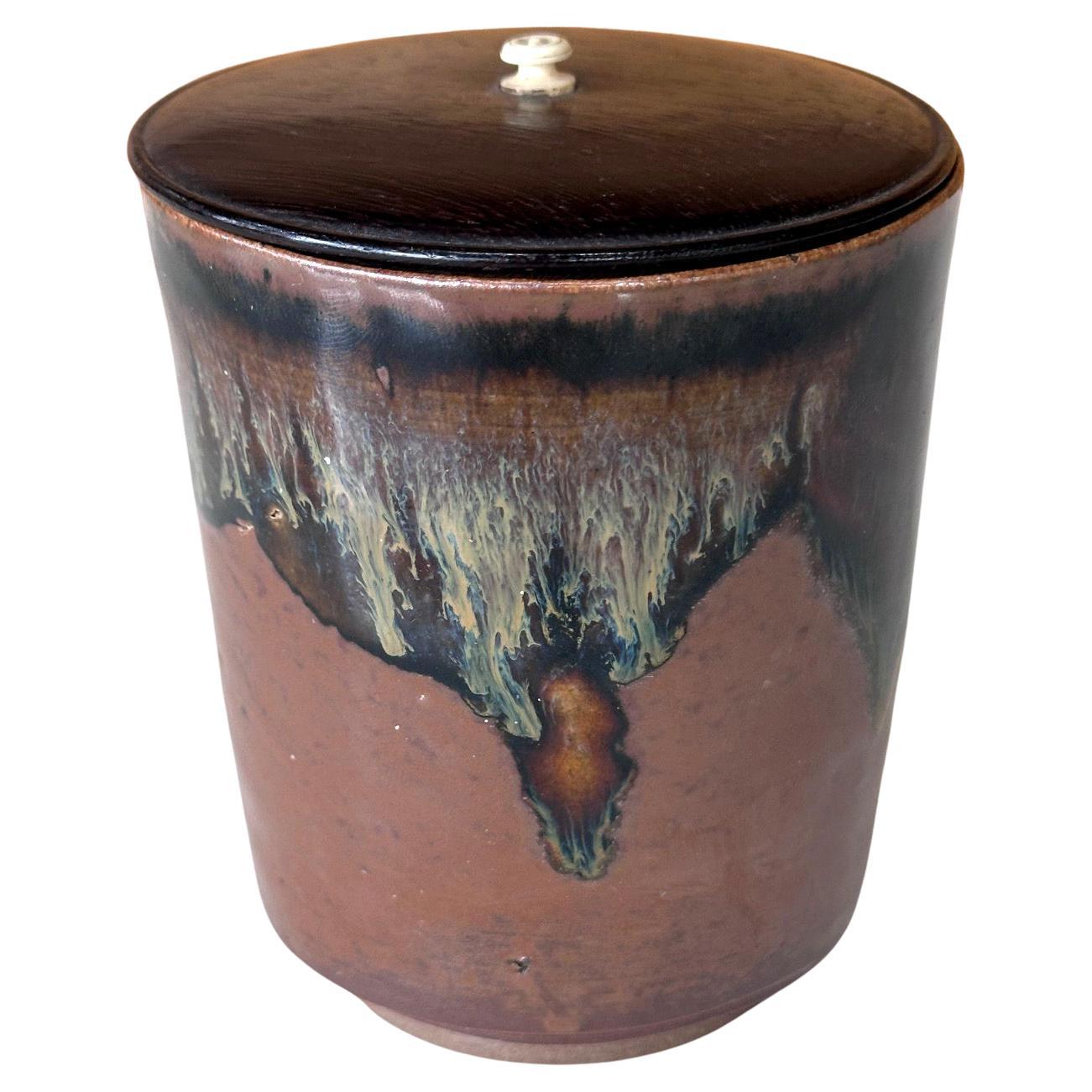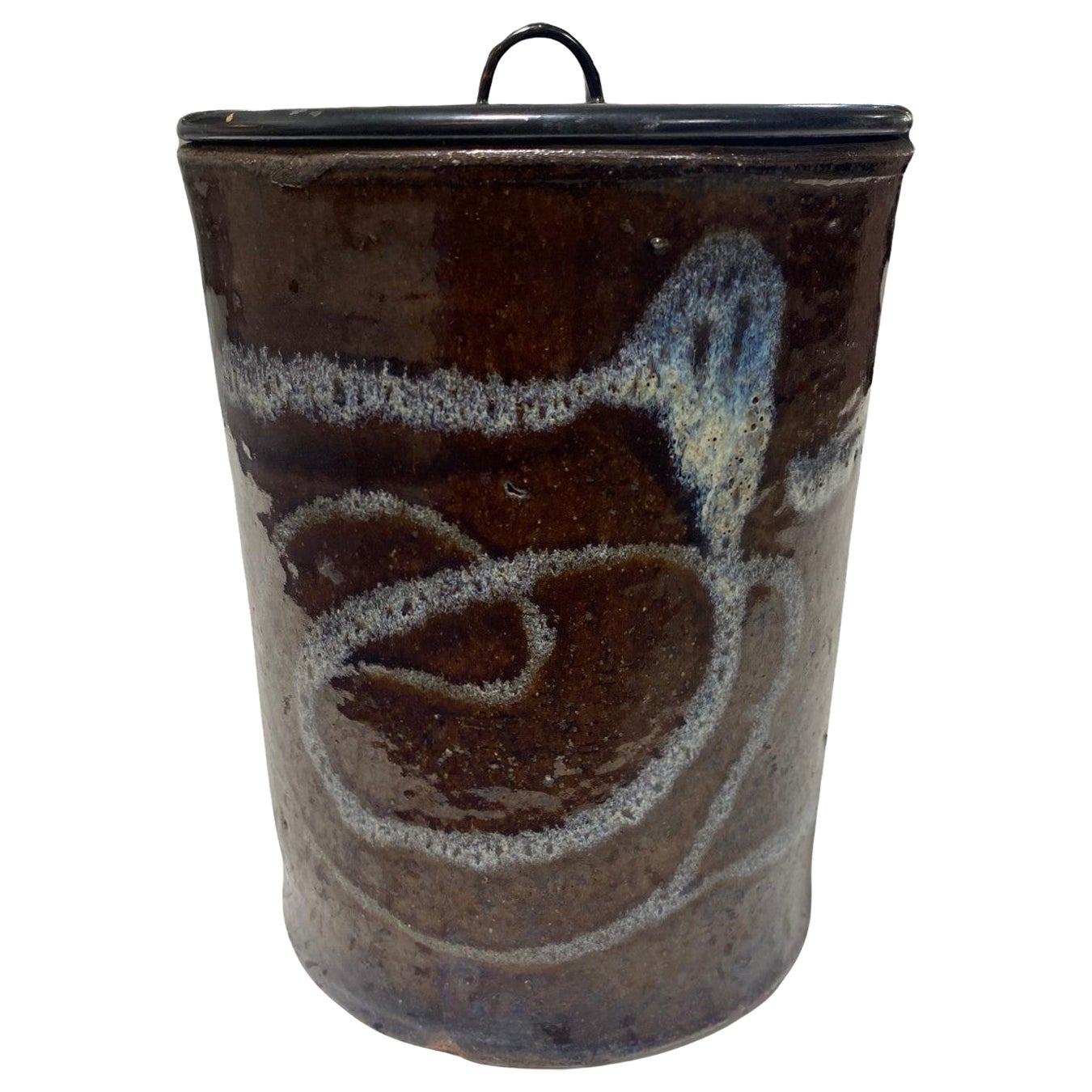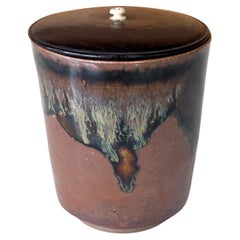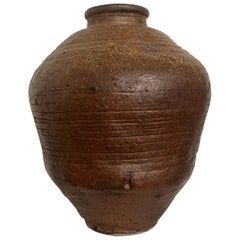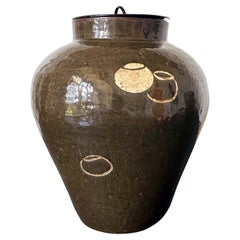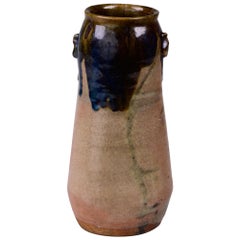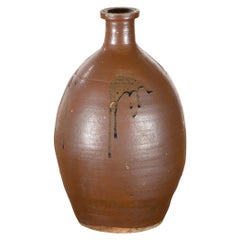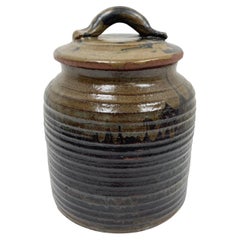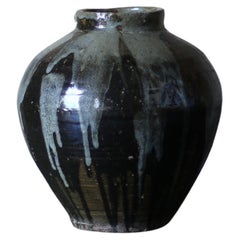Items Similar to Rare and Fine Antique Japanese Ceramic Ko-Satsuma Chaire Tea Caddy
Want more images or videos?
Request additional images or videos from the seller
1 of 17
Rare and Fine Antique Japanese Ceramic Ko-Satsuma Chaire Tea Caddy
$3,000
£2,262.01
€2,606.65
CA$4,161.81
A$4,663.29
CHF 2,427.42
MX$57,048.14
NOK 30,811.58
SEK 29,101.17
DKK 19,459.21
Shipping
Retrieving quote...The 1stDibs Promise:
Authenticity Guarantee,
Money-Back Guarantee,
24-Hour Cancellation
About the Item
A ceramic tall chaire (Tea caddies) ko-satsuma type from Edo period Japan circa 18th century. This type of small jar was made of stoneware. Its specific form with raised shoulder and a small opening was specifically designed to store green tea powder (matcha). Prototyped from the Chinese chaire, chaire was considered the most important piece of the accoutrement for chado (tea ceremony).
The chaire on offer here is slightly taller compared to most tea caddies. It features a heavily glazed surface with iron and ash dripping down from the shoulder to nearly cover the entire exterior. One exposed area reveals a brown glaze underneath with tight potter's ring. The dark iron dripping glaze is mottled with a slight metallic sheen and imbued with white splashes of color likely from rice-straw ashes. The chaire retain its old, likely original ivory lid that is lacquered gold underneath and also an old collecting paper label with Kanji writing "Old Satsuma Chaire One Piece".
A similar ko-satsuma Chaire can be found in the collection of Metropolitan Musuem of Art in NYC Edward C. Moore Collection, Bequest of Edward C. Moore, 1891. Object Number: 91.1.146
- Dimensions:Height: 4.25 in (10.8 cm)Diameter: 2.15 in (5.47 cm)
- Style:Edo (Of the Period)
- Materials and Techniques:
- Place of Origin:
- Period:
- Date of Manufacture:18th Century
- Condition:Wear consistent with age and use. Fine antique condition with minor wear. The lids show more patina naturally.
- Seller Location:Atlanta, GA
- Reference Number:1stDibs: LU945045319912
About the Seller
4.9
Platinum Seller
Premium sellers with a 4.7+ rating and 24-hour response times
Established in 2006
1stDibs seller since 2010
564 sales on 1stDibs
Typical response time: <1 hour
- ShippingRetrieving quote...Shipping from: Atlanta, GA
- Return Policy
Authenticity Guarantee
In the unlikely event there’s an issue with an item’s authenticity, contact us within 1 year for a full refund. DetailsMoney-Back Guarantee
If your item is not as described, is damaged in transit, or does not arrive, contact us within 7 days for a full refund. Details24-Hour Cancellation
You have a 24-hour grace period in which to reconsider your purchase, with no questions asked.Vetted Professional Sellers
Our world-class sellers must adhere to strict standards for service and quality, maintaining the integrity of our listings.Price-Match Guarantee
If you find that a seller listed the same item for a lower price elsewhere, we’ll match it.Trusted Global Delivery
Our best-in-class carrier network provides specialized shipping options worldwide, including custom delivery.More From This Seller
View AllRare Antique Japanese Ceramic Takatori Ware Hoso Mizusashi
Located in Atlanta, GA
This small ceramic container from Edo period Japan circa 1800s was made in the Takatori Kilns in Fukuoka Prefecture. This type of small, tall jar with a lid was specifically created ...
Category
Antique 19th Century Japanese Edo Ceramics
Materials
Ceramic
Japanese Ceramic Sake Bottle Chosen Karatsu Ware
Located in Atlanta, GA
The long neck bottle of classic form was heavily potted with coarse clay with high iron content. The flask, circa 18th century Edo period, was purposed for sake storage but also substituted as a flower vase during tea ceremony. The surface is covered in glossy black glaze and contrasts strikingly with white ash glaze around the shoulder. The white, fired with straw, displays a splashing feather effect and fine crackles, blending in with the black artistically. This type of Karatsu ware...
Category
Antique 18th Century Japanese Japonisme Ceramics
Materials
Ceramic
Large Japanese Antique Shigaraki Tsubo Jar
Located in Atlanta, GA
An antique Japanese stoneware storage jar, known as tsubo from Shigaraki kiln, circa 17th-18th century (early Edo possibly Momoyama period)....
Category
Antique 17th Century Japanese Japonisme Ceramics
Materials
Ceramic
Japanese Ceramic Seto Tea Leaf Tsubo Jar Edo Period
Located in Atlanta, GA
A Japanese glazed ceramic jar with a lacquered wood lid circa 19th century of late Edo to early Meiji Period. The stoneware tsubo was used as a storage vessel for produce such as tea...
Category
Antique 19th Century Japanese Edo Ceramics
Materials
Ceramic
Japanese Ceramic Vase Mingei Style Hamada Shoji
By Hamada Shoji
Located in Atlanta, GA
A heavily potted stoneware vase in cylindrical form, decorated with abstract strokes in iron rust glaze (known as Persimmon Glaze in Japanese) on a black glazed background. The pattern suggests autumn grasses, and it was applied with free hands. The vase is attributed to Japanese potter Hamada Shoji...
Category
Late 20th Century Japanese Arts and Crafts Ceramics
Materials
Ceramic
Tall Korean Ceramic Storage Jar Joseon Dynasty
Located in Atlanta, GA
A Korean ceramic storage jar circa 18th century of Joseon Dynasty. The jar is of a classic Maebyong form (known in Chinese as Plum Vase or Meiping...
Category
Antique 18th Century Korean Other Ceramics
Materials
Ceramic
You May Also Like
Large, Beautiful Country-Ware Vase
Located in Hudson, NY
Large, beautiful country-ware vase. Possibly Oribe vase with beautiful blue-green drip over-glaze and other nice glazing techniques. Small "ears" on the side. Taisho period handmade ...
Category
Early 20th Century Japanese Taisho Ceramics
Materials
Ceramic
Japanese Taishō Period 1900s Tamba Tachikui Ware Brown Sake Jar with Drip Glaze
Located in Yonkers, NY
A Japanese Taisho period brown Tamba Tachikui ware sake jar jug from the early 20th century. Boasting a lovely brown color accented with black drip glaze, thi...
Category
Early 20th Century Japanese Taisho Ceramics
Materials
Ceramic
Studio Pottery Vessel in Japanese Water Jar Form
Located in Bridgeport, CT
A very well crafted lidded Water Jar in the form of the vessels used in the Japanese Tea Ceremony. The body of the jar is ribbed, glazed and bears fine abstract coloring in a deep de...
Category
20th Century American Edo Jars
Materials
Clay
Japanese Antique Pottery Vase 1900s-1940s / Kasama
Located in Sammu-shi, Chiba
This ceramic vase was made in Kasama, Japan. Kasama is a traditional and famous pottery producing area.
It is very old vase.
It has a very beautiful light blue glaze and has a wond...
Category
Early 20th Century Japanese Taisho Vases
Materials
Pottery
Japanese Mashiko Ware Mingei Pottery Water Container Vase Manner of Shoji Hamada
Located in Studio City, CA
A quite beautiful and visually stunning Japanese Mashiko Ware Pottery (Mashikoyaki) Mingei vase or Mizusashi (fresh water container used for traditional te...
Category
Mid-20th Century Japanese Showa Ceramics
Materials
Pottery, Stoneware, Wood, Lacquer
Japanese Bizen ware bunrin chaire by Toho Kimura
Located in Point Richmond, CA
Japanese Bizen ware bunrin chaire by Toho Kimura.
A ceramic powdered tea container for the Japanese tea ceremony. The globular body delicately potted and mottled with ash adhesions,...
Category
Early 20th Century Japanese Taisho Ceramics
Materials
Ceramic
More Ways To Browse
Edo Period Japan
Antique Canning Lids
Green And Gold Ceramic
Japanese Ivory
Japanese Labels
Japanese Ash
Japanese Tea Ceremony
Japanese Lidded Jar
White Lacquer Asian
Ivory Ring
Antique Japanese Rings
Ceramic And Gold Ring
18th Century Stoneware
Chinese Green And Black Ceramic
Antique Japanese Ivory
Antique Japanese Stoneware
Green Jar Japan
Jared Used Rings
